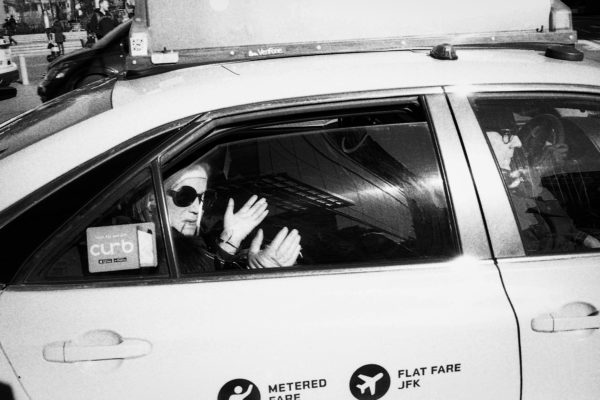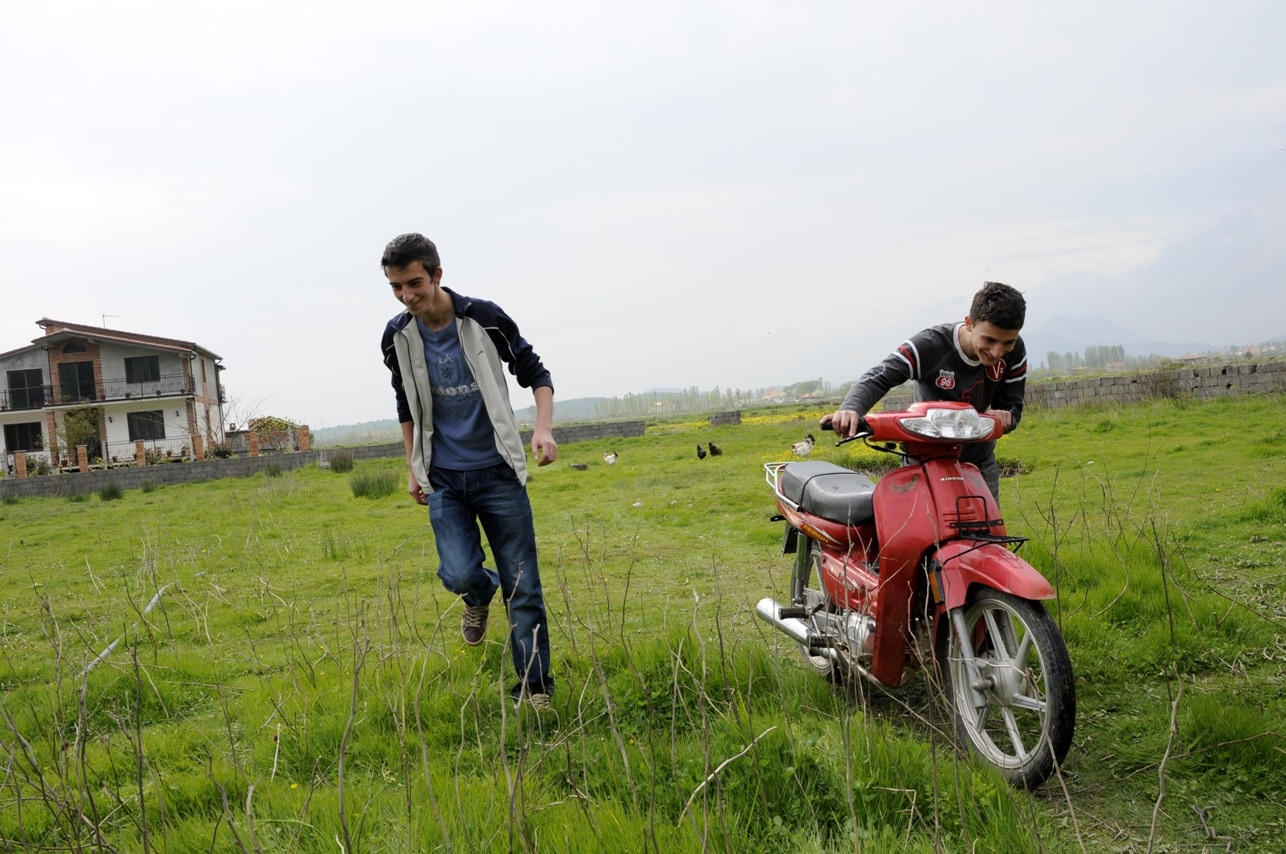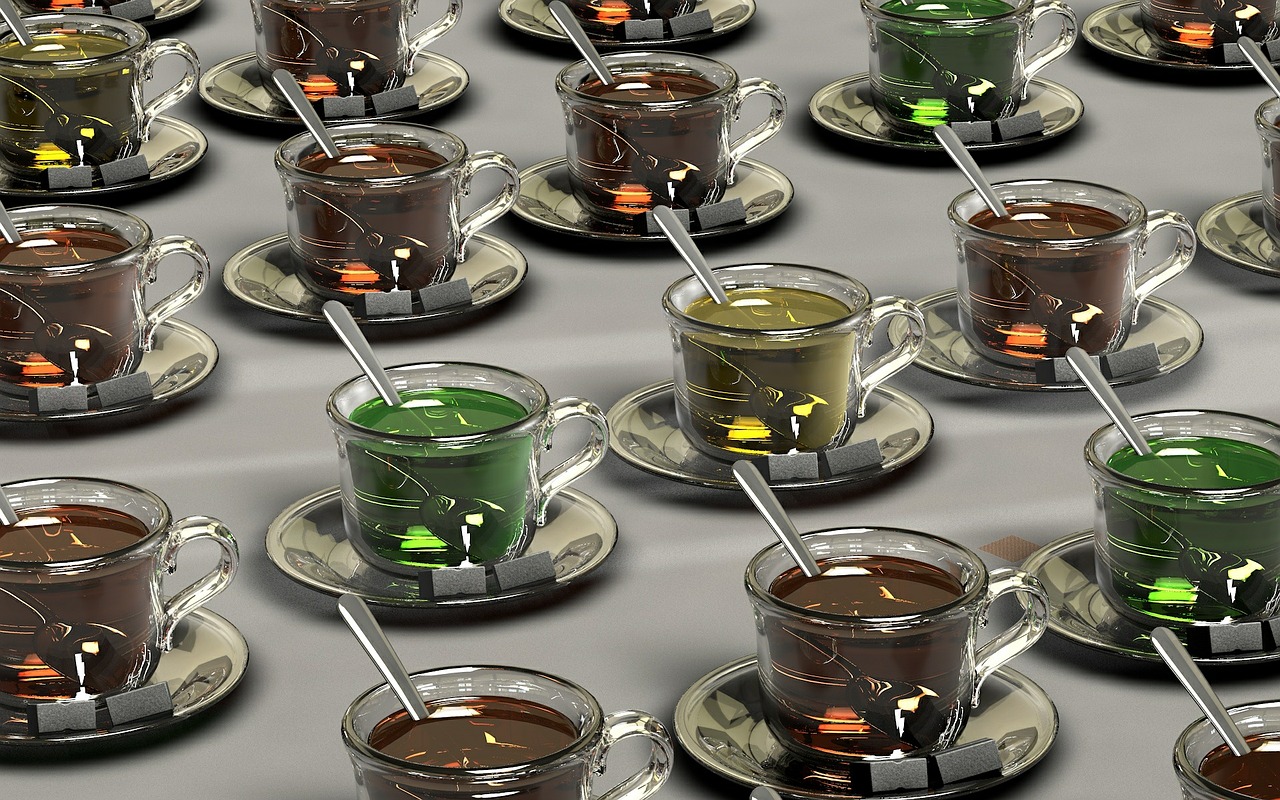When Tyler goes out, he starts downtown and walks up. Today, we begin on 26th street. He places a roll of film inside of his small Leica camera and snaps the latch shut before adjusting the settings to be able to take a photo within a three to five foot range. His hands move quickly, fingers nimble, eyebrows arched slightly while maneuvering the dials. I’m focused on his face as he focuses on making sure the camera’s in focus.
“The direction of the sun is good when I walk up,” Tyler says. “The natural light shines on people’s faces. If I walk down, the sun is behind them and I can’t take a photo, they’ll be a shadow or a silhouette.”
The camera is ready to go and he grips it lightly in his right hand, using his left to carry a portable flash. His finger twitches and a quick spark of light hits the cracked gray cement.
“Did you just take a photo?” I ask eagerly. I’m trailing a step or two behind him, watching the faces of people pass, wondering which one will be interesting enough to capture.
“Nope, just testing the flash. You’ll know when I take one.”
He’s calm under his gray beanie. We move past a mother pushing a light pink stroller and a couple buying sugared nuts. The camera is ready. The flash is ready. Tyler is ready.
I first met street photographer Tyler Woodford at a Starbucks in Midtown shortly after he made the move from Ventura to New York City, trading an easy-going west coast atmosphere for the dense cold of Manhattan.

Street photography is exactly how it sounds: photography that captures things happening on the streets. It peels back the layers of life and freezes time. New York City’s gift to street photographers is the camouflage of people. They’re everywhere. Everyone’s got somewhere to be, something to do, and it’s not uncommon to see multiple people carrying cameras. Tyler can photograph the city without completely disrupting it’s flow.
That morning, I’d been fed up with online interactions. I’d vented to my roommate about how closed off a city of millions can be, how no one talks to anyone anymore. We walk with our heads in our phones and our phones in our ears.
It was as if the world wanted to disprove my sentiment. Tyler was in line, camera hanging lightly from his neck. I asked him about it, attempting small talk with a stranger, curious to learn more about the camera as I’d just started taking photos of my own. His unassuming outfit – a hoodie and t-shirt – felt safe, approachable. Small talk about the camera was awkward, but easy. He’s open and willing to be pulled in whichever direction life leads at the moment, even if that meant talking to a stranger in line while waiting for coffee.
A small five minute conversation ensued in which I learned his love for photography started with photos and videos of skateboarding. He was the guy who always made videos of his friends at the skatepark and posted them on Youtube. We traded Instagram accounts and later, while scrolling through his photos, I was drawn to the honesty of his images. There’s a raw awareness to them. They’re undeniably human. Maybe that’s what I was looking for, something real in the claustrophobia of the internet age. I messaged Tyler and asked if I could go with him sometime.
It’s a chilly Sunday afternoon and crowds of people wash past us. As we stroll, Tyler explains his process. First, he looks for something unique, something that sparks his interest and then he tries to read the situation, moving to get within three feet of the person before quickly snapping a photo.
“What are you looking for when you photograph?” I ask.
He shrugs.
“I shoot people who stand out, who don’t look like everyone else walking the street. Like if someone looks like an old New Yorker with a huge trench coat and some huge hat or this gnarly looking person with a lot of wrinkles on their face or something.”

I examine the stream of people on both sides of the sidewalk, looking closely at their faces, studying their scarves, jackets and expressions, eavesdropping on their conversations. I’m anxious to see them through Tyler’s eyes. I want to see if I can spot what he’s looking for. I realize my palms are sweating in anticipation. I’m nervous and I’m not even carrying a camera.
“I feel like you’ve got to be pretty brave to do this…”
He shrugs again. One time he got pushed down by a man on Canal street. A two-hand-to-the-chest shove, mixed with icy sidewalks and two preoccupied hands holding expensive camera equipment. The man chased him down a block. Another time, the very first photo he took experimenting with flash, a woman looked at him and said, “You’re not nice.”
“I was like ‘Oh dammit, that’s such a bummer.’ I don’t want to do this anymore.”
But to capture life, you sometimes have to get in life’s path. Besides, his photographs aren’t meant to bother, they’re meant to reveal, or at least press pause on a moment we might otherwise overlook. Tyler explains that those two stories stick with him because they’re outliers. Most people don’t notice him and if they do, they keep going.
“It’s kind of crazy, like people just keep walking, it’s weird. It’s like nothing happened. I get really close and I have my flash, a little blast, and they just keep walking; they try to dodge it and keep going.”
I’m not sure what I was expecting, but with the amount of photos taken each day on an iPhone and the ability to snap, snap, snap away at the same object or person over and over again, I was thinking we might be taking hundreds of photos, capturing carelessly. But twenty minutes into the escapade and Tyler still hasn’t taken a single photo. I think back to our first conversation, Tyler had said something about how taking photos on your phone doesn’t make you a photographer. There’s a process, an attention to detail that comes with crossing over from amature photo-hoarder to artist. There’s also the element of film.
“Shooting with film makes you care more. It’s more of an investment. I don’t get to see the shot for a while. Plus, you have to work for it. You have to develop it.”
Film requires patience and selectivity. Tyler places a huge amount of energy into each shot unlike the millions of selfies gathered with the tap of a thumb each day. I think about it like this: Art is in details rather than abundance.

We turn the corner and Tyler’s hand moves deftly. Snap. The first shot he takes is of a lady in a bright green coat with red-rimmed glasses and white fly-away hair. A small, high-pitched “ahh” escapes her mouth in shock and she keeps moving.
Tyler says “Thank you” slightly above his breathe and we cross the street. His eyes are bright with adrenaline and there’s a new energy in his cheeks. My heart is beating faster, too.
“Why did you choose her?” I ask giddily, picking up my pace to keep up.
“I don’t know. I just felt something, an instinct. There was just something about her. She’s different. She didn’t just look like everyone else out here.”
Less than thirty seconds later, the camera moves again. A quick instinctual hand shift and the aftermath of a small flash. It’s of an older couple. They’re holding hands.
I ask him about it, wondering again, why them? He says he’s never had to think about it. He’s never had someone there to talk to about the process, about why he photographs what he does, but he tries to explain it anyway.
“The way her hair was falling… it was different. It swooped over her eye. That, and they both looked angry. They were frustrated with something. Maybe with each other.”
I looked back at the couple as they disappeared into the crowd. I missed it. But Tyler caught it. He caught it and moved forward, still moving up.
Charlee is a writer from Colorado. She is currently pursuing an MFA in Non-fiction writing at Columbia.
Tyler Woodford’s work can be found on his website and on Instagram.




